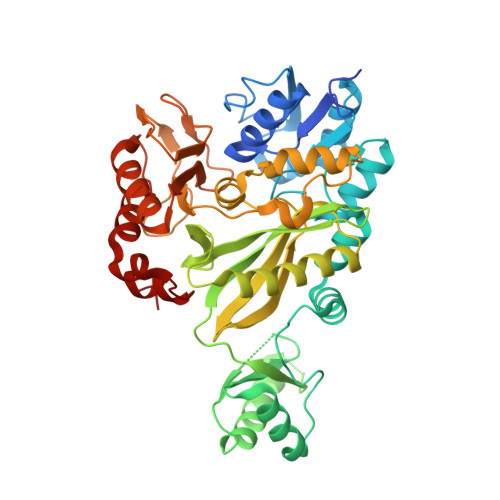Is dimerization required for the catalytic activity of bacterial biotin carboxylase?
Shen, Y., Chou, C.Y., Chang, G.G., Tong, L.(2006) Mol Cell 22: 807-818
- PubMed: 16793549
- DOI: https://doi.org/10.1016/j.molcel.2006.04.026
- Primary Citation of Related Structures:
2GPS, 2GPW - PubMed Abstract:
Acetyl-coenzyme A carboxylases (ACCs) have crucial roles in fatty acid metabolism. The biotin carboxylase (BC) subunit of Escherichia coli ACC is believed to be active only as a dimer, although the crystal structure shows that the active site of each monomer is 25 A from the dimer interface. We report here biochemical, biophysical, and structural characterizations of BC carrying single-site mutations in the dimer interface. Our studies demonstrate that two of the mutants, R19E and E23R, are monomeric in solution but have only a 3-fold loss in catalytic activity. The crystal structures of the E23R and F363A mutants show that they can still form the correct dimer at high concentrations. Our data suggest that dimerization is not an absolute requirement for the catalytic activity of the E. coli BC subunit, and we propose a new model for the molecular mechanism of action for BC in multisubunit and multidomain ACCs.
- Department of Biological Sciences, Columbia University, New York, New York 10027.
Organizational Affiliation:
















